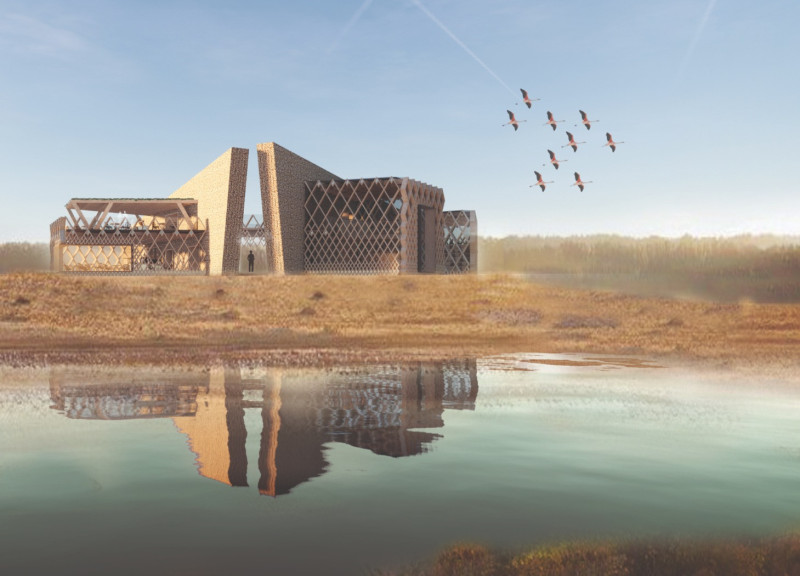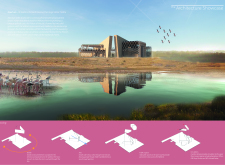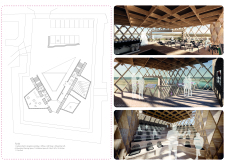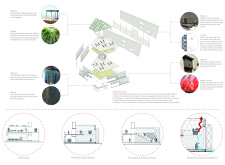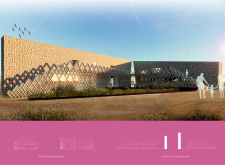5 key facts about this project
The Al Watbha Wetland Reserve Flamingo Visitor Centre serves as a key location for educating visitors about the unique ecology and cultural significance of the Al Watbha Wetland. Positioned within a vital habitat, the centre aims to promote exploration and appreciation of the surrounding environment. The overall design focuses on integrating the building with its natural context, creating a space that is functional and respectful of the landscape.
MASSING AND FORM
The building's massing is intentionally designed to create a welcoming courtyard at the entrance. This layout draws visitors in while providing views of the expansive wetland. The shape of the structure incorporates shading elements to maintain comfort throughout the warm days typical of the region. A central axis guides visitor movement, facilitating a smooth transition between indoor and outdoor experiences.
PUBLIC SPACES AND CIRCULATION
Public areas are strategically placed along the outer walls, ensuring that visitors have clear views of the wetland. This arrangement enhances the experience, allowing a strong connection to nature. The design also includes an outdoor terrace that links different levels of the building, making it easy for guests to navigate. Essential support spaces, such as reception, offices, and restrooms, are located on the lower levels to keep the focus on visitor-centric activities above.
MATERIALITY AND ECOLOGY
The choice of materials plays a significant role in the project’s focus on ecological sensitivity. Gabion walls made of locally sourced stones not only provide structural support but also create habitats for local birds. This careful use of materials helps reduce the overall impact on the environment while promoting biodiversity. Additionally, the use of hessian fabric to create a textured membrane adds an aesthetic dimension while ensuring durability in this unique setting.
DESIGN MOTIF
An important design feature is the facade's diamond pattern, inspired by the feathers of flamingos. This motif draws a connection to the local wildlife and serves as a visual embodiment of the relationship between the built environment and the natural landscape. The thoughtful inclusion of these design elements illustrates a clear connection between architecture and ecology, enhancing the overall experience for visitors.


